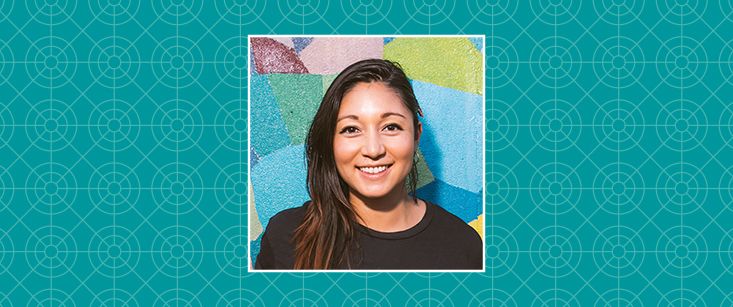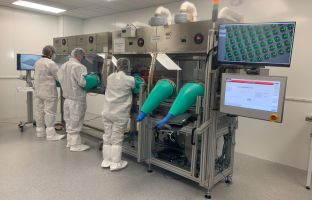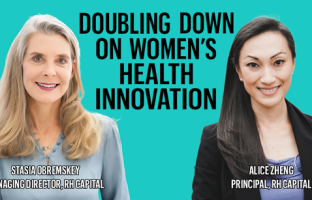Hereditary Hemorrhagic Telangiectasia (HHT). Not only a mouthful, but also very hard to spell and remember - a fitting name for a rare disease. This is the genetic blood vessel and bleeding disorder I have, which my brother and I inherited from our mother. Thanks to her relentless efforts, we are part of the fortunate few that have been properly genetically tested and diagnosed.
While rare, HHT is the second most common inherited bleeding disorder, and yet despite its prevalence, it is poorly understood in the medical community. It is a complex disease that causes malformed blood vessels that can affect and rupture in multiple organs. As is often the case with rare diseases, the diagnosis and care for HHT are highly dependent on the provider’s familiarity of the disease and its symptoms. For HHT, as a patient gets older, symptoms progress, with severe nosebleeds being one of the most common. My mother’s nosebleeds started to intensify after having us, and although we lived in an area with great access to care, there were no physicians that recognized the disorder. Finally, after one too many nose cauterizations, my mother advocated for another opinion and was referred to a specialist nearby at Yale New Haven Hospital. Fortunately, it just so happened that an Interventional Radiologist at Yale was the godfather of HHT back in the ‘90s. Upon seeing my mother, the physicians recognized the disorder immediately.
HHT has no cure or FDA approved treatment yet, and severe complications can arise if it is not properly diagnosed or treated. People living with rare diseases, like HHT, suffer from increased mortality and reduced quality of life, including higher anxiety and depression. Additionally, these conditions may lead to lower social engagement due to lack of care options, or resources through the healthcare system. Growing up with a condition that causes regular nosebleeds and life-threatening debilitations was always an embarrassing thing in my mind. However, as more people share stories about their health issues that were once seen as “taboo,” such as mental health, now is the time to combat stigmatization and promote education on rare diseases.
What are rare diseases and how rare are they?
The Orphan Drug Act defines a disease or condition as rare if it impacts less than 200,000 people in the US. “There are about 7,000 known rare diseases and collectively, about 1 in 10 people (or 30 million people) in the U.S. have a rare disease,” according to the NIH.
Other countries may have their own definitions. For example, the European Union defines a rare disease as affecting less than 1 in 2,000 people. Globally, there are about 350 million people, or 8% of the population, with a rare disease, yet only 5% of these diseases have an approved therapy. It’s a “small numbers, big problem” dilemma that is historically overlooked, largely because it’s hard to make a profit from a treatment that affects so few people.
For HHT, 1 in 5,000 people worldwide are affected, so while it is rare by US metrics with a patient population of ~70,000, globally the prevalence is in the millions. Like other rare diseases, it is abysmally underdiagnosed, with only 10% of the HHT population being diagnosed today, and the median age of diagnosis in early to middle adulthood. Rare diseases are plagued with delays in diagnosis, as well as frequent misdiagnoses (40% of cases). Coupled with a lack of treatment options, this can result in significant and sometimes fatal events.
The power of the patient
Patients like my mother have become the pioneers of change for rare diseases, advocating for themselves and educating their physicians in real time. Patient advocacy organizations and disease-focused, nonprofit, research foundations have proven that they can make a significant impact on scientific research, treatment development, and funding. HBS alum Kathy Guisti and MMRF is a best-in-class example, and with the pandemic, long-Covid patients have become huge advocates as well.
Cure HHT, a patient-led foundation, has been the catalyst for awareness, funding, and care over the past 30 years. It has created a research network connecting patients, scientists, and clinicians, and increased multidisciplinary care at 32 Centers of Excellence at US hospitals. Cure HHT has recently turned $2M in seed grants into $51M in funding from the CDC, FDA, and NIH. It has also been selected to join the Chan Zuckerberg Initiative Rare as One network, which has been instrumental in accelerating a focus on research and clinical trials.
While these are examples of great strides, the biggest challenges for rare diseases are receiving funding and attention from researchers and big pharma – but the tides are changing. The underserved nature of the rare disease population combined with increases in federal funding, biotech and medical advancements are spurring optimism for the future.
Growth in the markets for clinical trials, drug repurposing, and orphan drug development (a $340B market by 2027) are all creating a favorable atmosphere for new rare disease treatment options. The most exciting area of opportunity is in genomics and precision medicine (expected to be a $175B market by 2030). With 72% of rare diseases having genetic origins, the potential of a world with tailored therapies based on gene targeting feels like the promised land.
A patient doing what she can today
While potential therapies for HHT feel more tenable today than ever before, I found I could not sit on the sidelines. I never imagined science and healthcare would be part of my career trajectory, but my motivation to make a difference as a patient has grown. I joined the Cure HHT board of directors in 2020 inspired by the challenge and vision to find a cure.
As I became more involved with Cure HHT this past year, leading our-three year strategic planning and supporting our new fundraising initiatives, I learned of the HBS Social Enterprise Initiative and their non-profit board resources. The team also introduced me to the Health Care Initiative, who were able to connect me to their vast network of leaders in the space. The depth of HBS’s resources for cure-seeking organizations has been a totally unexpected, but very welcome surprise. Through HCI connections, I have been able to share patient engagement strategies with executives at several NPOs and meet with multiple biotech VCs, which has resulted in a promising biotech partnership.
As we celebrate Rare Disease Day, I reflect on how transformational the experience of joining the board of Cure HHT has been for me and how much I’ve learned in the past year alone. I’ve found purpose in working to solve a big challenge, not just for the disease impacting my family, but also in raising the shared voices of patients with rare diseases. In a time when inclusive care and new technologies are at the forefront of the healthcare industry, the rare disease population cannot yet again be overlooked.
About the author:
Gabby Choi (MBA 2017) is a seasoned startup tech operator, focusing on go-to-market and business strategy, and evaluating and launching new solutions in Subscription SaaS, Marketplace and Consumer spaces. She has passion for building zero to one, having also incubated a couple companies over the years – a real estate tech company with NYC-based venture studio, Alleycorp, and a healthy beverage brand with a fellow HBS alum. Previously, Gabby worked in management consulting at Deloitte. She received her BBA at Emory University and her MBA from Harvard Business School.







